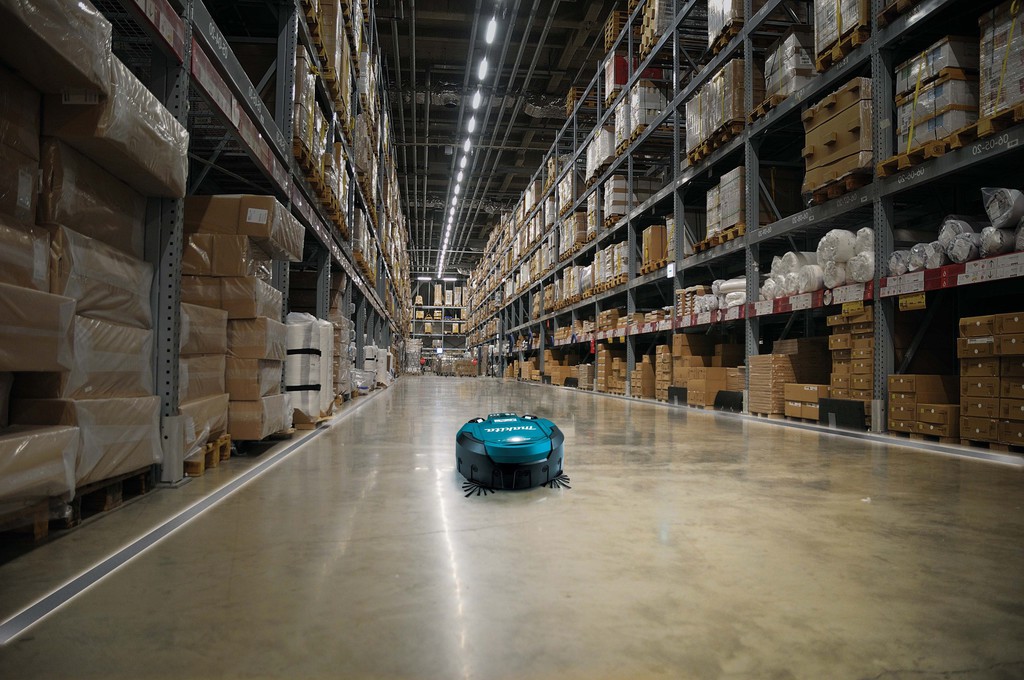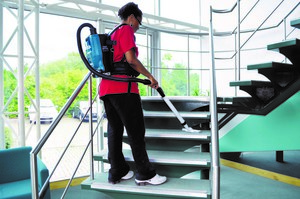

|
Edward Lowton
Editor |


|
| Home> | Premises management/maintenance | >Cleaning equipment | >Cordless technology |
Cordless technology
05 August 2016
Makita, has introduced two vacuum cleaning machines to its range of mains and cordless dust extraction units, cordless vacuum cleaners and air blowers.

Makita’s knowledge of air flow and vacuum science, coupled with the proven Lithium-Ion battery platform, is integral in the new twin 18V Backpack vacuum cleaner and the new 18V Robotic Vacuum Cleaning machine. Both machines are supplied in body only form for operators to use the batteries from their existing Makita tools. Distributors can supply 3Ah, 4Ah or 5Ah Makita batteries with respectively 22, 36 and 45min rapid recharging time.
The new Makita DVC260Z backpack vacuum cleaner uses two 18V Li-Ion batteries directly housed on the machine to power the 36V DC Brushless motor which produces 45watts of suction power with a maximum airflow of 1.5m³/min and maximum sealed suction of 7.1kPa. The HEPA filter can be easily removed for cleaning.
The high/low power selection is positioned on the machine control unit and two 5.0Ah batteries give 60min run time in high mode, and 90min in low mode. Dust bag capacity is 2 litres and weight is 4.3kg. Supplied with a full brace harness with waist and shoulder belts for ease and comfort, this quiet-running Backpack vacuum has a lightweight 28mm suction hose, telescopic straight pipe with 500-850mm length adjustment, and flexible rubber nozzle suitable for cleaning uneven surfaces. The Makita DVC260Z is being trialled by train operators and airlines to speed passenger turn round.
The new Makita DRC200Z 18V Robotic vacuum will run for three hours and twenty minutes at a maximum speed of 0.3m/s, and cover up to 500m² in either a random pattern, or a fixed area marked out with boundary tape on the floor which effectively limits the vacuum’s area of operation. The main power brush and twin side brushes give a greater sweeping area than other brands and this Makita machine has a giant 2.5 litre dust collection box. It can operate in vacuum and brush mode or brush-only for larger debris.
Ultrasonic detectors and bumper sensors stop the machine on close contact which then sends the machine in a different direction. A buzzer and blinking light on the machine warns nearby workers of the vacuum’s approach. An LED indicates when filter cleaning is required and a cliff sensor stops it falling down stairs. A wireless remote controller can be used and it can be set to start after 1, 3 or 5h, enabling visitors or staff to be out of the building when robotic cleaning commences.
- Compact yet powerful steel rod cutter
- Makita makes an impact with new XGT machine
- Mighty impact wrenches
- Back-pack vacs go into action
- Cordless dust extractor
- Enhanced performance & longevity
- Tool range expanded
- Improved M-Class dust extractor
- Lower vibration
- Brushless circular saw with automatic torque drive


















